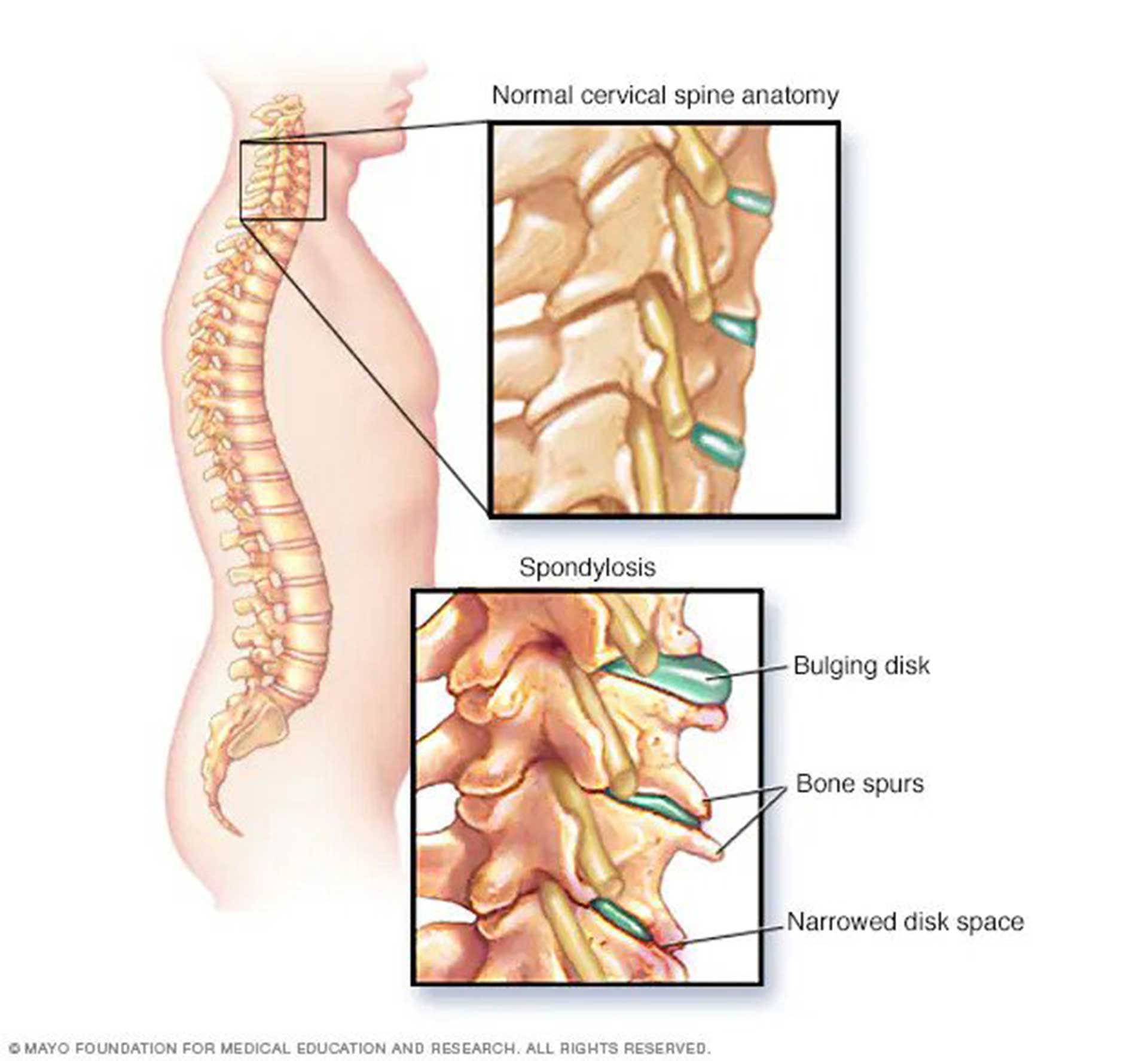
Cervical spondylosis


Overview
Cervical spondylosis is the wearing down of the spinal disk in the neck due to dehydration and shrinkage. This condition may occur as you age, mostly in people who are more than 60 years old. Osteoporosis and bone spurs then develops later on.
Symptoms
Cervical spondylosis can be asymptomatic but if symptoms occur, stiffness and pain usually manifests.
The spinal cord and nerve roots are inside a space passing across the spine. When this space is narrowed as a result of cervical spondylosis, it compresses the spinal cord and nerve roots, and you will notice the following signs and symptoms.
- Weakness, numbness or tingling sensation on upper and lower extremities
- Walking and coordination problem
- Bladder and bowel incontinence
These are the symptoms that you will have to observe because you may need to see a doctor immediately.
Causes
The bones of the back and neck are prone to degeneration as you get older and the following changes may be observed:
- Dehydrated disks. The spinal disk’s role is to become the cushion in between the vertebrae. When it becomes dry or shrinks starting at around 40 years of age, the bones of the spine will be rubbing against each other.
- Herniated disks. When the spinal disk’s outer layer cracks open, the disk bulges out and puts on pressure on the spinal nerves and cord. This condition is called a herniated disk.
- Bone spurs. The spine has a tendency to produce additional bone structures as a defense mechanism to make the spine stronger due to degeneration creating bone spurs that can compress the spinal nerve roots and spinal cord.
- Stiff ligaments. Ligaments connects the bones with each other. When they become stiff due to aging, it affects the flexibility of the neck.
Risk factors
These are the risk factors for cervical spondylosis:
- Neck injuries
- Age. Old age mostly leads to cervical spondylosis.
- Occupation. Working conditions which provides a lot of pressure on the neck or repeatedly uses the neck.
- Genetic factors. Cervical spondylosis can be hereditary
- Smoking. Aggravates the pain.
Contact Information
service@vejthani.com






















